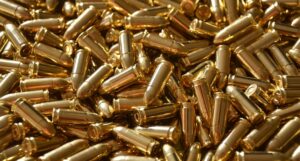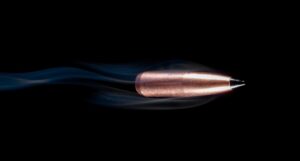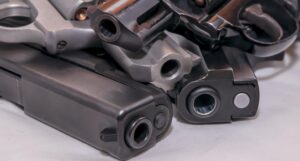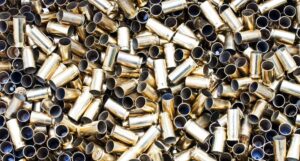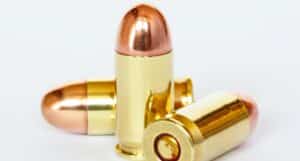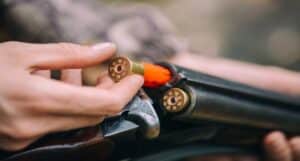Grains, which are abbreviated as (gr), is a system that describes the weight or mass of a bullet. Bullet weight is an important consideration for anyone who is shooting to hit a target. A single grain is 1/7000 of a pound.
Written by Berry's on March 13, 2023
How far can a bullet travel? How you answer that question depends on the bullet in question. For example, a .22 caliber bullet can travel around 1 mile to 1 1/2 miles. Some bullets, such as a 9 mm may travel up to three miles. Shot travels a shorter distance between 200 and 600 yards.
Written by Berry's on February 28, 2023
Many shooters approach reloading their own ammo as a means of saving money on the cost of buying new rounds. Does the sum of the parts equal the whole? The cost-savings may not be the most impressive factor.
Written by Berry's on January 31, 2023
If you are wondering which is a better round for your needs and are considering the 9mm or 45 ACP, you might also be surprised to find that they are much the same. However, one of them has higher velocity and is a thinner round making it a better option for distance shooting. Both do well for self-defense, but not necessarily hunting big game.
Written by Berry's on January 29, 2023
As shooters we focus on many things – muzzle velocity, the effects of gravity, trajectory, bullet energy, even shooting technique – but the reality is that when we fire a round, all of these things become a battle between the round and the pressure of the air. How the bullet handles the air around it impacts the accuracy, speed, and impact it has should it reach its target. That is true whether you are shooting a bullet with a full metal jacket, a composite, or a regular type of projectile. Boat tail bullets have a way of dealing with the air around them so that they shoot truer at longer ranges.
Written by Berry's on December 14, 2022
Right out of the gate you should know that these two rounds are not interchangeable. In fact, individually, they go to two different types of firearms. The .38 Special is a revolver round and the .38 Super is manufactured for a semi-automatic pistol. To say the least, they are different enough that you cannot mix them.
Written by Berry's on December 5, 2022
Which is better – the .44 Magnum or the .45 ACP? How you answer that question comes down to how you use the rounds. They are close but not at all the same. Those of you who need to put a lot of power and impact on a target will reach for the .44 Magnum. Those of you who can do with less impact and less power but want to put many rounds into or around a target will reach for the .45 ACP.
Written by Berry's on October 19, 2022
What is the difference between wet tumbling brass and dry tumbling brass? And which is better? At the core of those questions is the desire to reload your old, spent casing. If you are someone who is concerned about the rising cost of ammo, then reloading your old casing is one way to save some money and still have quality ammo available to target practice, hunt, or for home self-defense.
Written by Berry's on October 13, 2022
Which is better the 10mm or the .357 round? This is a question we hear a lot. The answer might surprise you. Neither is better. They are each just slightly different. Those differences give one strength over the other as the circumstance changes and the stronger one is not always the same round.
Written by Berry's on September 26, 2022
A complete round, bullet, shell, ammo, cap, pill, slug, and other terms you hear commonly for the word cartridge – A piece of ammunition that you load into a gun and fire at a target. In all honesty, the word cartridge is a little misleading because you don’t fire the cartridge at your target, you fire the bullet and without some of the other pieces that make up a “round” of ammunition, not much would happen. This blog focuses on what an ammo cartridge is and its parts. We also go a little into what each part does and the role it plays in how a firearm projectile works.
Written by Berry's on July 28, 2022

